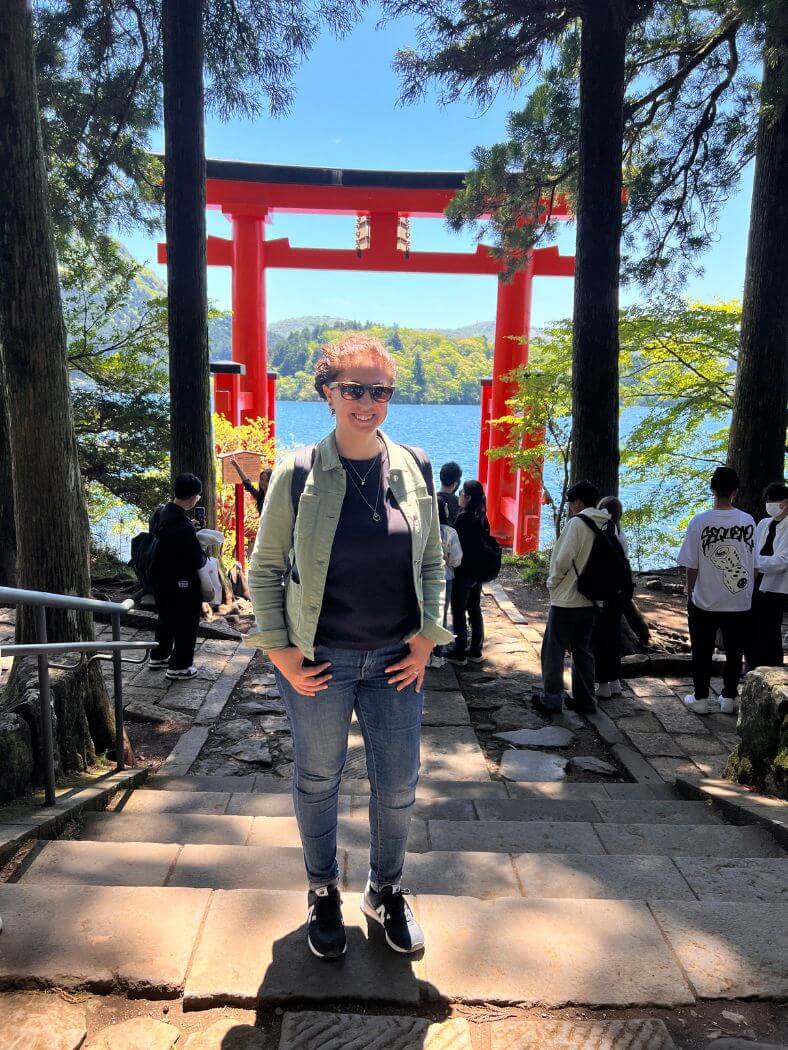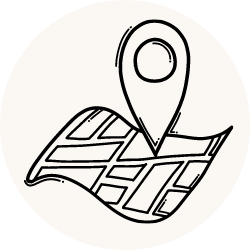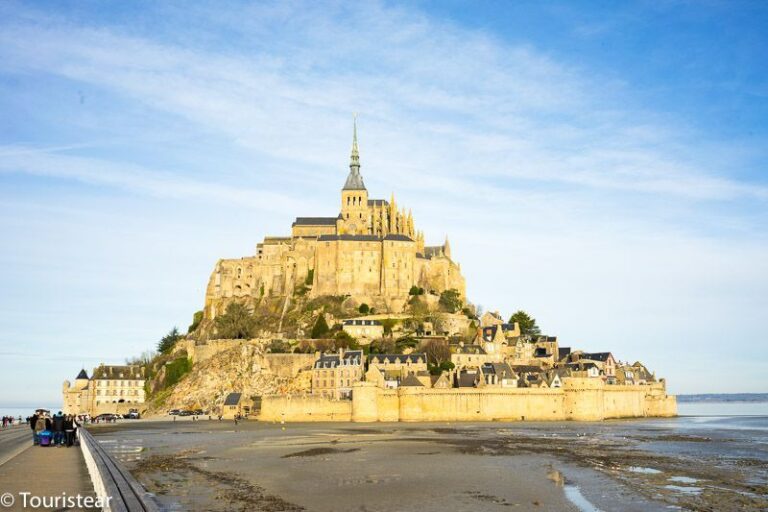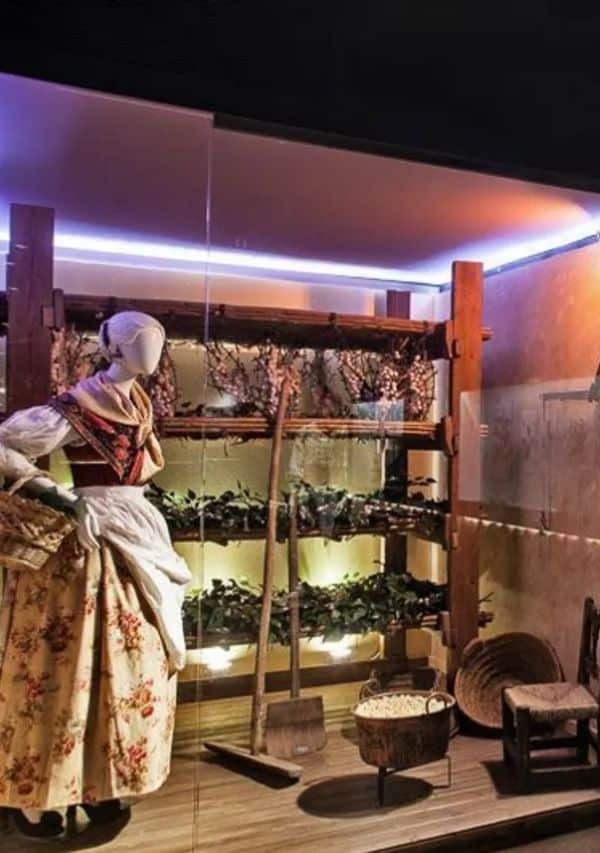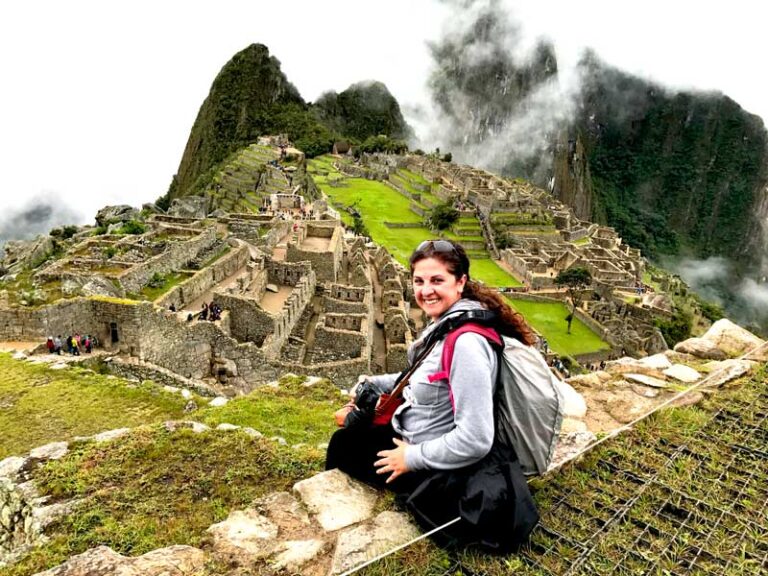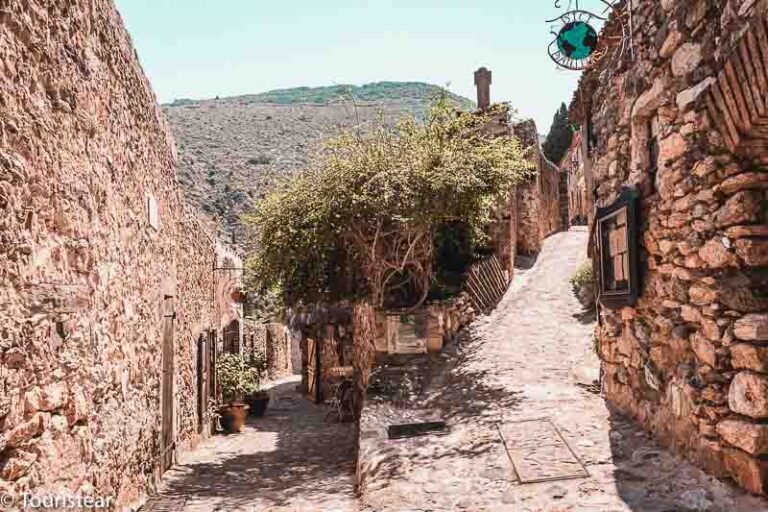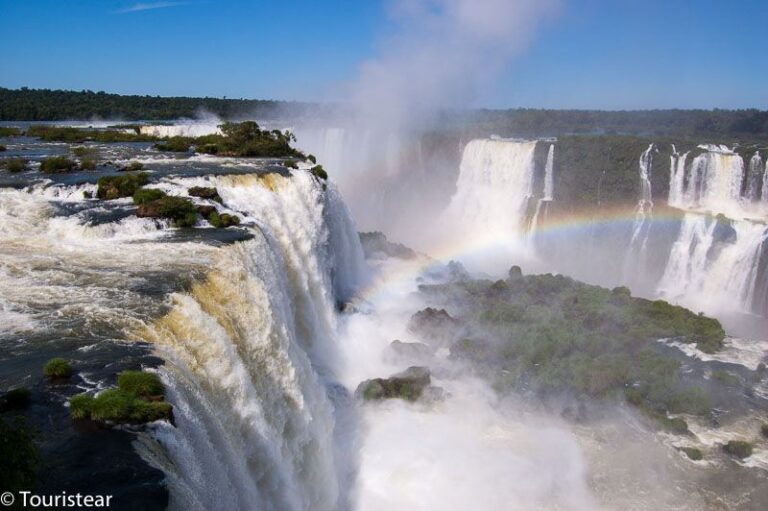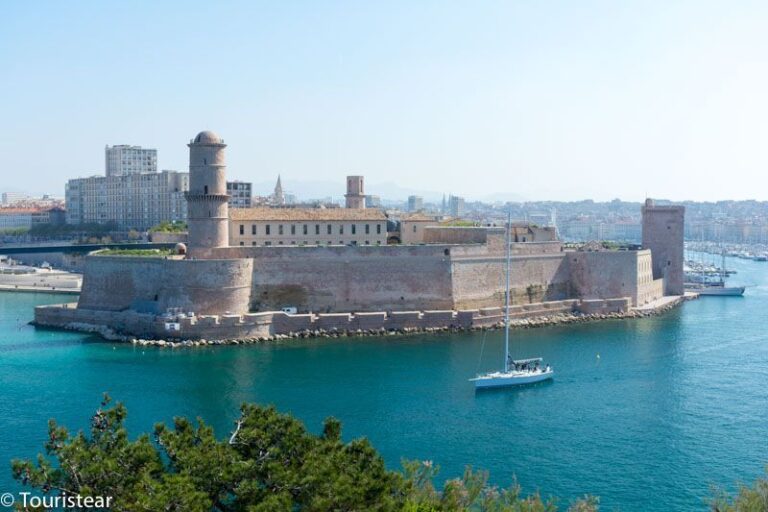Best Things to Do in Krakow in 4-day, Itinerary + Tips
Krakow is a city that surprised us and to which we look forward to returning. It is beautiful, has a lot of history and exciting places to visit.
In this post, I give you a summary of what to see and do in Krakow and its surroundings, and then you will find a few tips to organize your trip that will make your trip easier. Let’s Start!
Krakow in 4 Days, Essential Daily Visits
Krakow, a World Heritage Site, has a lot of things to see, so if you only have four days as we had, it’s time to get organized so as not to waste time.
Day 1: Krakow Old Town and Wawel Hill
The historic center of Krakow, or Stare Miasto (Polish for old town), is the first thing you must visit.
We have written this post about Krakow’s city center and everything you must visit.
Market Square
In Polish, it’s called Rynek Główny, in case you see any signs 😉
The Market Square is about 40,000 square meters!
It is the largest in Europe and one of the most beautiful, surrounded by old houses and palaces.
In the center of the square is the monument to Adam Mickiewicz, the Polish poet of romanticism who wrote the national epic – Pan Tadeusz (Don Thaddeus). He is like Shakespeare for British 😉
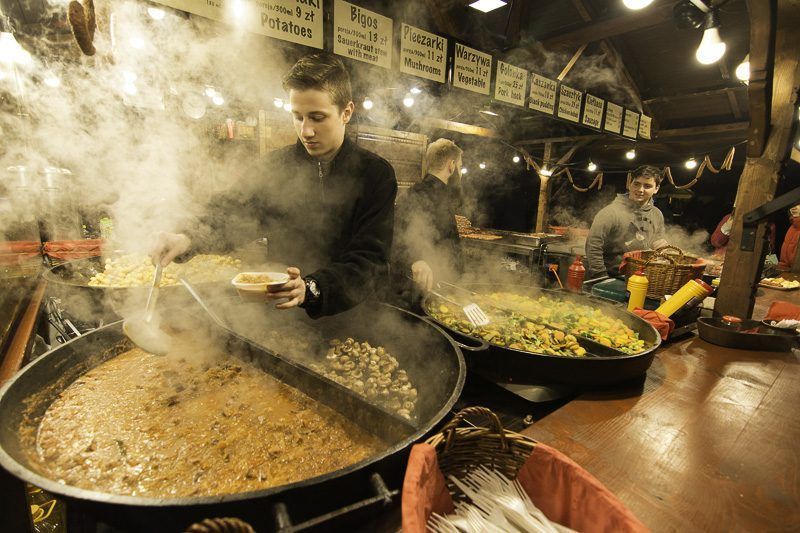
This monument is the meeting point of the citizens and the starting point for many tours, so keep an eye out for it!
Underneath Market Square, you can visit the Underground Museum. Visitors can see the medieval remains and learn more about the history of the first Polish capital. It is necessary to book in advance or go on a guided tour.
The Cloth Hall
The Cloth Exchange (Sukiennice) is a building located on Market Square and is a former market.
It was built in the thirteenth century and was originally where fabrics and clothes were sold, hence its name.
After a fire, it was rebuilt in Renaissance style. It then served as a meeting place for traders worldwide to talk business and barter.
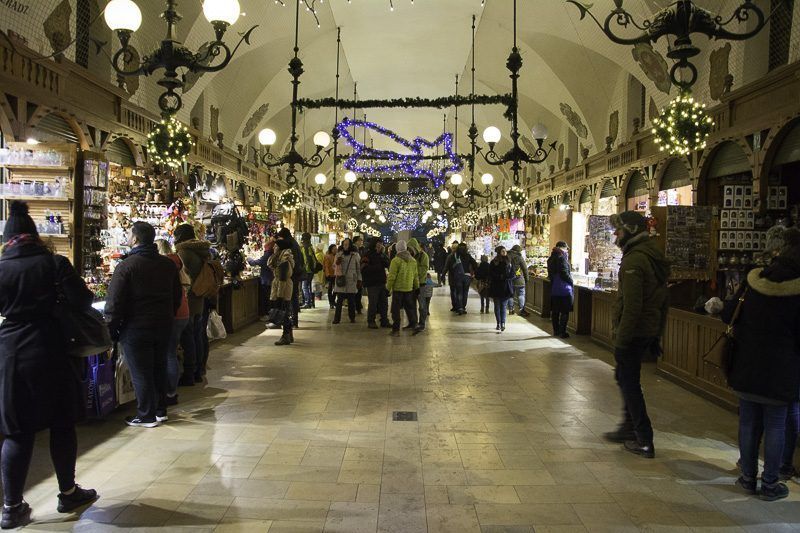
It is now full of stalls selling souvenirs, including many where you can buy the famous Polish amber. If you look closely, a knife is hanging below the ceiling.
It is unknown exactly when it appeared there, and two legends explain its origin. One says that the knife warned merchants that, according to Magdeburg Law, whoever stole would have his hand cut off.
And the other tells the story of two brothers who had to build the towers of the Basilica of Santa Maria (you will see that it has towers of different heights).
When one of them saw that his brother was higher, he killed him with this knife and, repentant, threw himself from the highest tower.
Basilica of Santa Maria
St. Mary’s Basilica, built in the 14th century, is one of the most famous in Poland. It is popularly known as Kościół Mariacki.
It has a wooden altarpiece, the largest in Europe, 12 meters long and 11 meters high, made by a well-known artist of the 15th century, Veit Stoss.
At first glance, you can see that its towers are not the same height – see above for the legend that tells why.
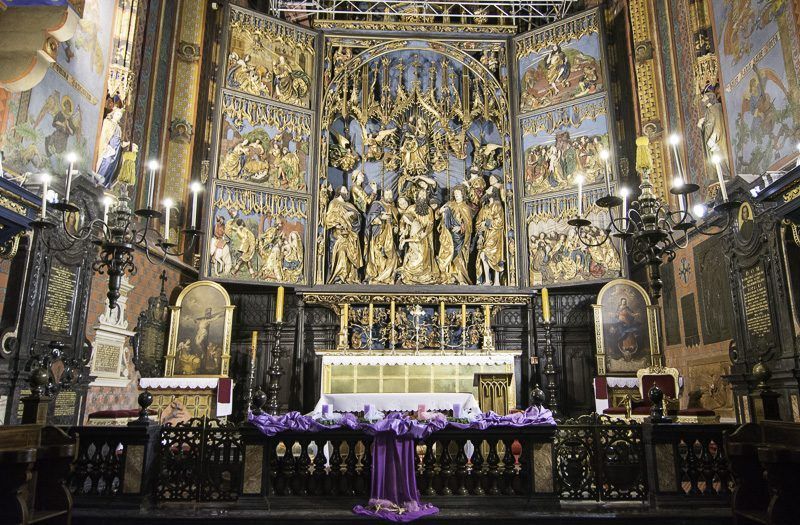
Every hour from one of the towers, Hejnał Mariacki is played, a trumpet melody that is abruptly cut off.
That is due to a legend, which says that the original melody was played to warn the citizens of enemies’ attacks, and an arrow hit the trumpeter.
It is worth visiting the basilica’s interior and climbing one of its towers to appreciate the views of Krakow.
St Adalbert Church
In Polish Kościół św. Wojciecha is one of the most charming churches in Krakow. A small building located at the intersection of Grodzka Street and Market Square was built in the 11th century.
It is still in operation and also organizes classical music concerts.
Basilica of St. Francis of Assisi
The Basilica was built in the 12th century and is one of the oldest buildings in Krakow’s Old Town and the first to be built of brick.
Inside it is filled with a mixture of styles due to numerous remodelings over the centuries. They say it was Karol Wojtyła’s favorite church when he lived in Kraków before he became Pope John Paul II.
Note the beautiful stained glass windows created in the 19th century by Stanisław Wyspiański, a famous Cracovian artist.
Please note that the basilica cannot be visited during masses.
Tower of the Old Town Hall
Wieża Ratuszowa, in Polish, is located next to the Cloth Market, and although the views are not as good as from the tower of St. Mary’s Basilica, it is worth passing its gate guarded by two stone lions to observe its Gothic style.
Upstairs you can see the mechanical system of the clock and photographs of the city from past centuries.
There is now a theater in the basement where the jail used to be.
St. Florian’s Gate
It once belonged to the walls of Krakow and was one of the access gates to the city. It was built in the 12th century and is the only one that has been preserved to date.
The gate is on Floriańska Street, which leads to Market Square and then continues as Grodzka Street, along which one goes to Wawel Hill. This route is known as the Royal Road (Droga Królewska).
The Church of St. Paul and St. Peter
Taking advantage of the walk along Grodzka Street, take a look at this church, with a beautiful facade in baroque style with the figures of the 12 Apostles carved in detail.
Por dentro no impresiona tanto, ya que la fachada resultó ser más cara de lo previsto ????
St. Andrew’s Church
It is located right next to the Church of St Paul and Saint Peter. It is a Romanesque building built in the 11th century. During the Tatar invasion, it was used as a defensive point.
The pulpit in the shape of a ship and a Foucault Pendulum stand out in the interior.
Collegium Maius
Collegium Maius now houses the Museum of the Jagiellonian University of Krakow and was the first university building in Poland. It was built in the fifteenth century in the Gothic style.
In the museum, you can see ancient instruments used in cartography, astronomy, physics, and chemistry studies.
The most interesting thing is the patio with brick arcades and a peculiar clock that presents a parade of wooden figures accompanied by music every two hours.
Czartoryski Museum
The Czartoryskis are a noble family closely linked to Poland’s art history. Krakow is home to one of the museums that house the collection donated by the family.
It occupies three historic buildings where you can see European paintings, furniture, porcelain, glass, tapestries, and weapons and antiquities from Rome, Egypt, and Greece.
That’s where the original of Leonardo da Vinci’s “Lady with an Ermine” is on display.
The Barbican
It is the most interesting part of the old walls. It is a building with a circular floor plan, surrounded by a wall of considerable thickness and a moat formerly filled with water. It was built in 1499 as a response to the Ottoman invasion.
You can’t visit the inside, but only from the outside; it’s curious. On this free walking tour, you will be guided to the Barbican and other essential places in the old town of Krakow.
Planty Park
It is a green ring that surrounds the entire old city of Krakow. An extensive park called the lung of the city. It is about 8 km long and has gardens of different styles.
It was created at the beginning of the 20th century when the city began growing and the walls collapsed. This space was converted into a park.
Wawel Hill
For centuries, the Wawel Castle was the residence of the kings of Poland and the Wawel Cathedral.
Remains were found that indicate that the hill was already inhabited in the Palaeolithic. Then the castle was built in Gothic style, which was the first seat of Polish kings, remodeled for centuries and now sports a Renaissance style.
The Royal Palace can be visited inside and has different exhibitions:
- in the basement, you will learn about the history of the hill and see the gothic remains of the castle,
- in the State Rooms, there are paintings and furniture from the period,
- the Royal Apartments (only with a guided tour in Polish or English), where the apartments of the kings are explained,
- the Crown Treasury and the Armory – precious objects from the history of Poland, weapons and the royal coronation sword,
- Museum of Oriental Art, with objects from Asia.
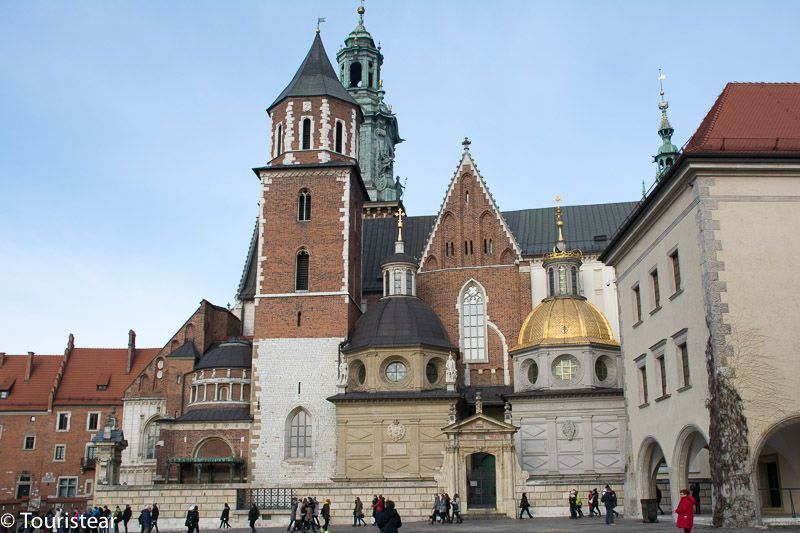
The Cathedral
It can be said that it is the most important church in Christian Poland. In this cathedral, weddings, baptisms, and burials of the most important people in the country have been celebrated for centuries, and centuries ago, kings were crowned here.
Inside, several points of interest are recommended to be seen (at the entrance, you can take a map where they explain it to you), but the most impressive thing for me was seeing Sigismund’s Bell up close.
There are a few steps to climb but standing under a 12-ton bell made in 1520 is well worth it.
Wawel Dragon Cave
According to legend, a dragon lived under Wawel Castle many years ago. He was starving and ate the citizens; no knight could finish him off. Until one day, a young shoemaker arrived…
The Dragon Cave can now be seen inside during the summer months, with a fire-breathing dragon statue in front of it.
Day 2: Visit Auschwitz-Birkenau Concentration Camp
The second day is dedicated entirely to the visit to the Auschwitz concentration camp and the expansion of Birkenau.
Our recommendation is that you do the visit with a good guide in your language, this way you will live a different experience than if you do it without a guide.
In our case, we had an excellent guide who put us in the situation despite the fact we did the visit in December with temperatures under zero degrees Celcius (under 32 ºF).
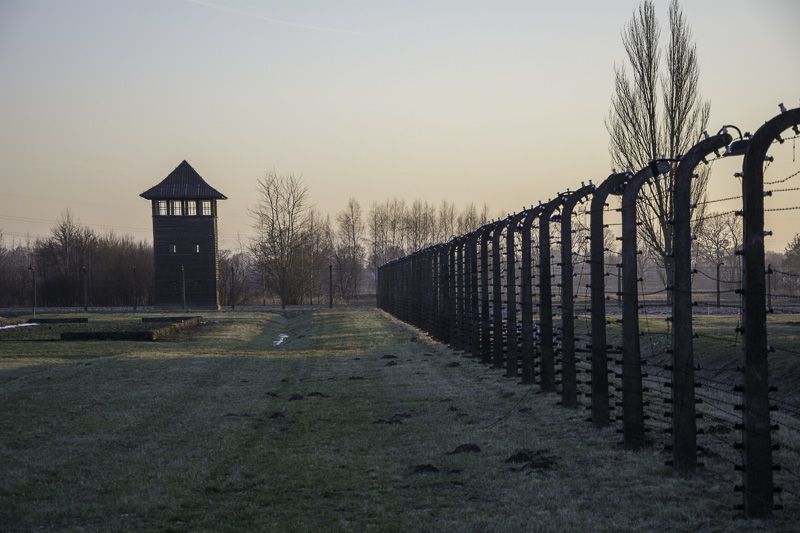
Undoubtedly, an essential day trip you have to make on your journey to Krakow. A visit to raise awareness and to ensure that history does not repeat itself.
The visit to Auschwitz can be booked online. I leave you this post with all the information for visiting the Auschwitz concentration camp memorial.
Day 3: Wieliczka Salt Mines and Kazimierz Jewish Quarter
On the third day, take advantage of the morning to visit the Salt Mines of Wieliczka, a World Heritage Site since 1978, another must-see place close to Krakow.
One of the most beautiful rooms in the mine is the Holy Kinga Chapel, where everything is made of salt. The chandeliers will leave you speechless, and the sculptures are fascinating.
An endless spiral staircase makes the descent to the mine, and then you go up in an old elevator used by the miners.
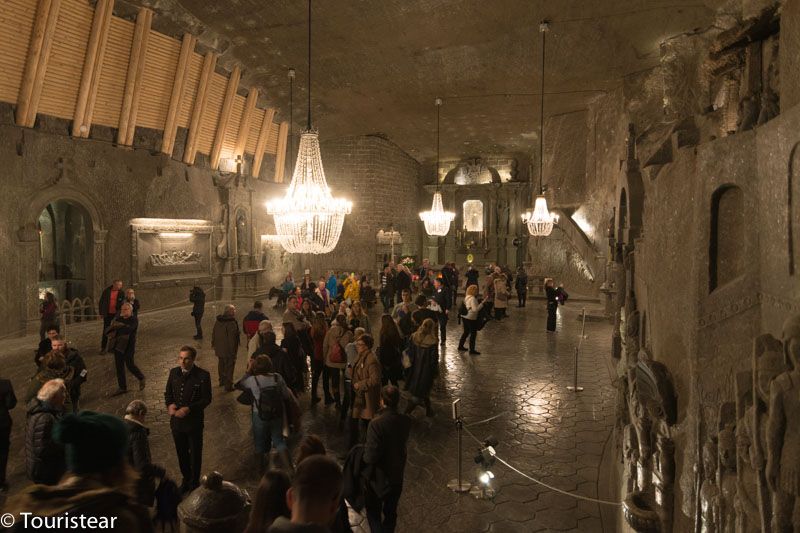
Visiting the Wieliczka Salt Mines is an excursion for the whole family. However, it is not suitable for people with reduced mobility except for the room of the Saint Kinga Chapel.
If you go in high season, book your visit in advance since, although many people go, capacity is limited. The tour lasts approximately 4 hours.
In the Afternoon, Visit the Kazimierz Neighborhood
The Jewish quarter of Krakow is a place where you have to visit yes or yes in this city. It is a place linked to the history of the Jews that has evolved over time.
Between the 14th and 19th centuries, it was an independent city inhabited mostly by Jews. Its cemetery is home to great Polish rabbis and Orthodox Jews from all over the world who make pilgrimages annually.
But for visitors and locals, this neighborhood is trendy, with plenty of pubs, restaurants and clubs that you have to check out.
The most famous and eclectic is Alchemia, which is in Plaza Nowy, along with many bars, pubs and restaurants to have a good time.
Old Synagogue
You also have to visit Krakow’s Old Synagogue (Stara Bożnica), built in the 15th century by Czech Jews who came to the city. It is currently the oldest synagogue in Poland.
Inside, you can see part of the collection of the Jewish Museum. It is a bit disappointing from the outside because it is completely renovated.
Remuh Synagogue
It is the smallest in the Kazimierz neighborhood but the only one that is still in operation.
It was founded in the 16th century by Mr. Remuh, an important philosopher, astronomer, historian, and geometer of the time.
Next to the synagogue, you can visit an old Jewish cemetery with tombstones inscribed in Hebrew.
The Podgórze Ghetto
Crossing the Vistula River, we enter the Podgórze neighborhood, which during the Nazi occupation, was turned into a ghetto (as the Nazis said, to clean up the center of Krakow).
There is not much to see there, but we did see two places that mark tourists: one is the remains of the ghetto wall on Lwowska and Limanowskiego streets.
Another is Bohaterów (Heroes) Square, where an original monument to the victims of the Nazis was built. It was a tribute to Roman Polanski, director of Schindler’s List.
During the war, it was in this square that the Jews who were going to be transported to the concentration camps were gathered.
In Bohaterów Square is also the former Apteka pod Orłem (Eagle Pharmacy), the point of salvation for many Jews from the harsh reality of the ghetto.
Take the opportunity to have a drink here and enjoy the atmosphere. We went to Alchemia, the one with the sewing machines and another one that I can’t remember, all very cool and well-priced.
Day 4, Schindler Factory
We couldn’t leave Krakow without visiting Schindler’s Factory. We went to the Warsaw Ghetto in the neighborhood now known as Podgórze.
This was where the Nazis sent the Jewish population of Krakow; in its 320 buildings, 15,000 people had to be crammed.
Most died here and others in the concentration camps of Plaszów and others in the gas chambers of Auschwitz.
We could not tour the entire Krakow Ghetto, but we did visit the Schindler factory.
I imagine you have seen the movie “Schindler’s List” (if not, I recommend it before your trip to Krakow). The factory of Oskar Schindler, a Nazi party affiliate and informer, was in charge of this pot factory.
Eventually, he became aware of what the Nazis were doing and risked his life to save his Jewish employees, who were to be sent to concentration camps, saving 1100 people from a fatal fate.
Inside the former factory, you will learn all about the history of the Nazi occupation of Krakow (1939-1945). In the last room, there is information about Schindler’s life.
Nowa Huta Neighborhood
If you have time left in the afternoon, visiting the communist neighborhood of Nowa Huta is interesting. It was built by the Soviet regime after World War II to house workers from the nearby steel factory.
A good place to learn about the history of communism in Poland, a difficult time that left its mark on recent generations in the country and prohibited development at the European level. Book a free guided tour of Nowa Huta here.
*Recommendation:
How to Get to Krakow?
Airplane. You can get to Krakow directly by plane; there are direct flights from many cities. Take a look to see the price from your location.
Train. We arrived in Krakow by train at the Krakow Glowny station while traveling from Warsaw.
This option is ideal because the flights to Warsaw are often cheaper, so you take advantage, get to know the Polish capital, and then go on its high-speed train to Krakow.
Car. Another option is by car; you can arrive in your vehicle on a road trip around Europe or rent a car at the airport or in the city and drive around Poland.
My recommendation is to tour Krakow on foot.
How to Get from Krakow Airport to the Center?
The center of Krakow can be reached in several ways, depending on your budget.
Without reservation, you can go by Taxi, which is the most expensive option, about 20€. You can go by Uber; it works well and is cheaper than a cab. Or you can go by public transportation, bus or train. I will tell you about it in detail in another post.
If you prefer to have everything booked in advance, you can book your transfer from Krakow airport to the city center here. It costs the same as a cab for a car of 4 people.
Where to Sleep in Krakow
In Krakow, you have many accommodation options for all tastes and pockets.
We stayed in an apartment 3 minutes walk from Market Square. It was small but in a great location.
You can also stay in hostels and hotels. Take a look at the accommodation prices in Krakow and book yours.
I hope this post will be useful for you in organizing your trip to Krakow. Please look at our post of a week in Poland in case you have more days to visit this beautiful country.
Do you know Krakow? What would you recommend to a future traveler?
Plan Your Trip to Poland
- What to see in Poland in 7 days. Itinerary
- Visiting the Warsaw Ghetto
- Visiting Auschwitz from Krakow
- Visiting the Salt Mines from Krakow
- Visiting Zalipie and Tarnow from Krakow
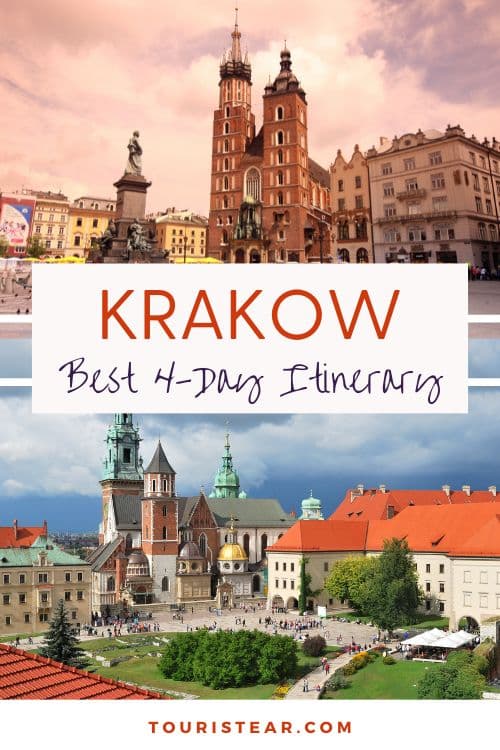
Last Updated on 15 September, 2023 by Veronica
Disclosure: Some of the links on this post are affiliate links, meaning at no additional cost to you, I may earn a small commission if you click through and make a purchase.
Author: Veronica
Vero, a seasoned traveler, has explored 25 countries and lived in five, gaining a rich perspective and fostering an infectious passion for travel. With a heart full of wanderlust, Vero uncovers the world’s hidden gems and shares insights, tips, and planning advice to inspire and assist fellow adventurers. Join Vero and let the shared passion for travel create unforgettable memories.
